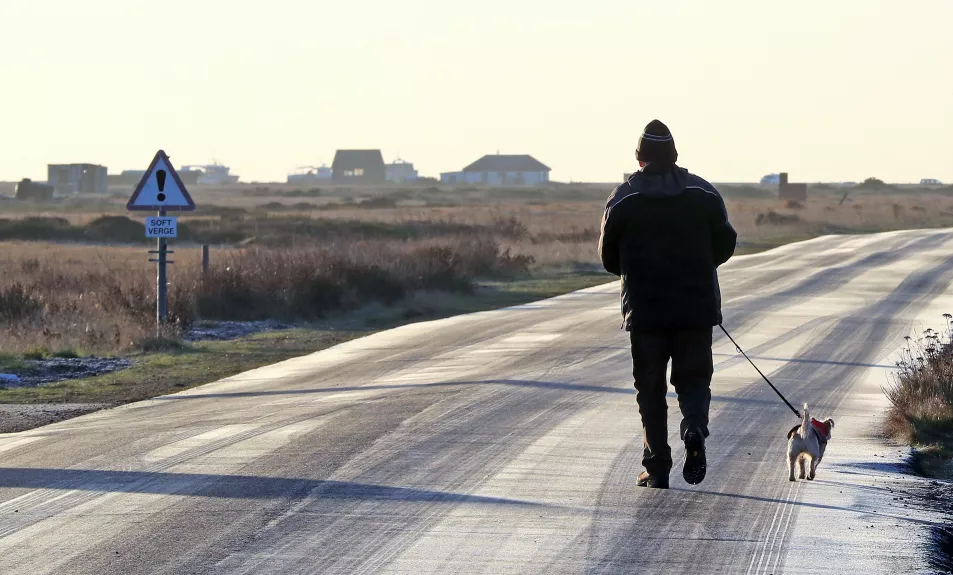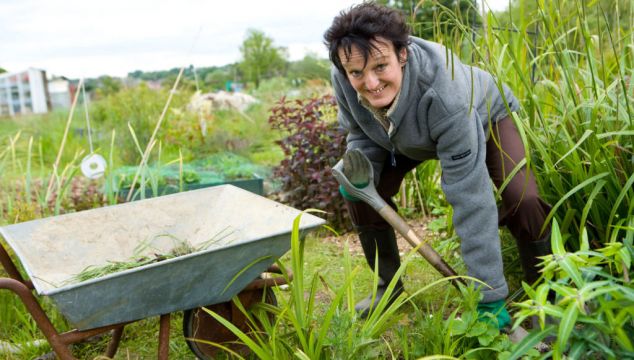Met Éireann has warned people of ice and frost as temperatures plummet.
Slips and falls can also be a danger for pedestrians when conditions are icy. But what about gardens? If this cold snap sets, it could also be very damaging to plants.
Here are some of the key tasks gardeners can do to ensure that they are prepared as the cold weather sets in.

Bring any tender plants indoors
While winter is known as the quietest time of year for gardeners, it is important for Guy Barter, the chief horticulturist at RHS, to ensure that the plants in your garden are well-protected to avoid any long-term damage.
“The first thing to do is to bring any tender plants – they can be damaged by a little frost – including begonias, pelargoniums and geraniums, that are still outside and move them to somewhere sheltered,” said Barter.
“They would need to be indoors where it never gets frosty. Ideally the temperature should stay above seven degrees at a very minimum. Below seven degrees, irreversible harm happens to the plant cells.
“So if you do this, there’s a good chance that your plants survive the winter without the cost of heating fuel to be too high in your own home. But it needs to be a place with a lot of light, like on the window sill.”

Put hardy plants in a greenhouse or against the house wall
Plants need time to harden off gradually and can be severely damaged if a mild autumn is abruptly followed by cold.
“For any plants that are reasonably hardy – that’s things like salvias – move them into an unheated greenhouse if you’ve got one, or against the house wall is good enough,” Barter said.
“These plants should be able to resist the cold down to minus five perhaps. But with that bit of extra shelter from the greenhouse or house wall, and the fact that they would be a bit drier there, they will ride out the cold weather. These are plants in pots of course.
Cut them back
“There are a lot of plants like dahlias that die in the winter. So it’s best to cut them back to ground level – about six inches so you can find them again in the spring,” said Barter.
“The roots also can either be dug up, brought indoors and stored in a shed where they won’t get frozen. Or they could just be left in the ground, as the soil doesn’t get too wet in the winter. And with a pile of mulch, bark chips or wood chips lying on top; you can buy from garden centres.

“They have a lot of buds in the roots that regrow in the spring – very conveniently – and go dormant in the cold weather and can ride it out. It’s just important to try and keep the frost out of the pile of mulch, if possible.”
Gather up the leaves
Barter went on to say: “It’s also the time to gather up the leaves that have fallen and sweep them under bushes where they can rot down naturally, or make a pile of them to rot down and make some leaf mould.
“And then you can also think about doing some winter pruning. These would be soft fruit, like black currents and grape vines. And you might also prune, shorten, shape or thin out hedges and shrubs that have gotten too big. But evergreens, leave them until spring because they need their roots to look after themselves over the winter, or they will go dormant.
“It’s a great opportunity to see the bare bones of your garden. Some parts might look sparse, so you can make notes to order plants for the spring. Or you can order trees and shrubs, like bare roots, which are a bit cheaper than plants being grown in pots. It’s usually a cheaper time for keen gardeners – a huge relief. “







